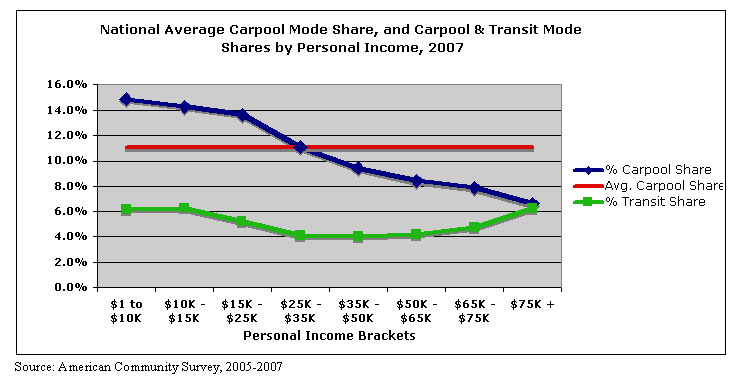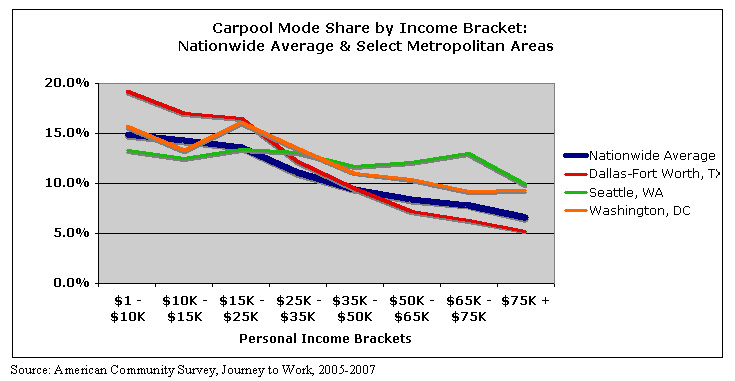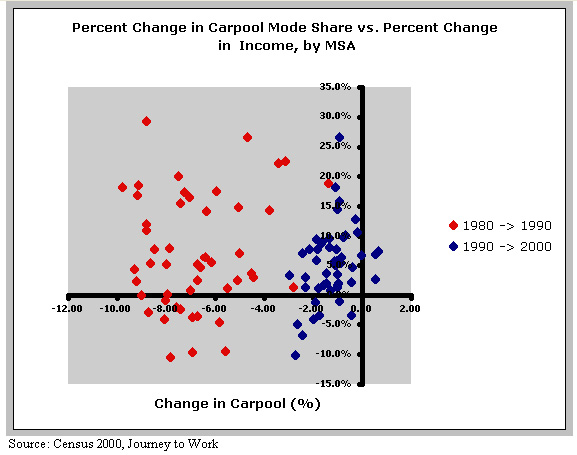
The metro-level relationship between personal income and carpool share is basically the same as the national level trend. In almost all cases, metro region carpooling decreases steadily with increasing income. Dallas-Fort Worth, TX is a good example of this. Carpool mode share for those making less than $25K is nearly 20%, yet decreases to just over 5% for those making more than $75K. Washington, DC is interesting in that it is one of only two cities in which carpool mode share increases (albeit marginally) in the highest income bracket. Seattle, WA is perhaps the most interesting metro are from a carpool mode share standpoint. Its carpool share remains remarkably consistent over all income brackets, only showing a noticeable decrease for those in the highest income bracket. It is likely that Washington state’s Commute Trip Reduction legislation for large employers explain some of Seattle’s higher than average carpool mode share in higher income brackets.

When the metropolitan level data is analyzed over time, the income trend is not significantly different; the change in inflation-adjusted household income at the metropolitan level has a discernible, but varied impact on carpool mode share. One can certainly see that decreases in carpooling have commonly occurred when household incomes have risen (top-left quadrant) however there are instances when decreases in carpooling have been associated with decreases in income (bottom-left) and more recently, increases in carpooling have been observed when income has increased (top-right).
While it appears that there is a substantial change in mode share in the 1980’s as compared to the 1990’s, one should remember that the 1980 Census would have been taken during a period of high gas prices resulting from the 1970’s Energy Crises. With the sharp decrease in gasoline prices in the 1980’s, it is not surprising that the carpool share showed a large decrease across many metropolitan areas.

Overall, the data suggests that increasing levels of income are associated with a decrease in carpool mode share, both at the national and metropolitan levels.